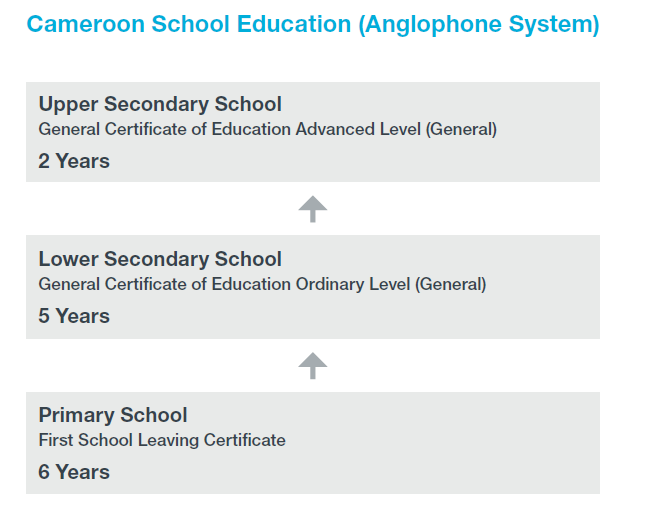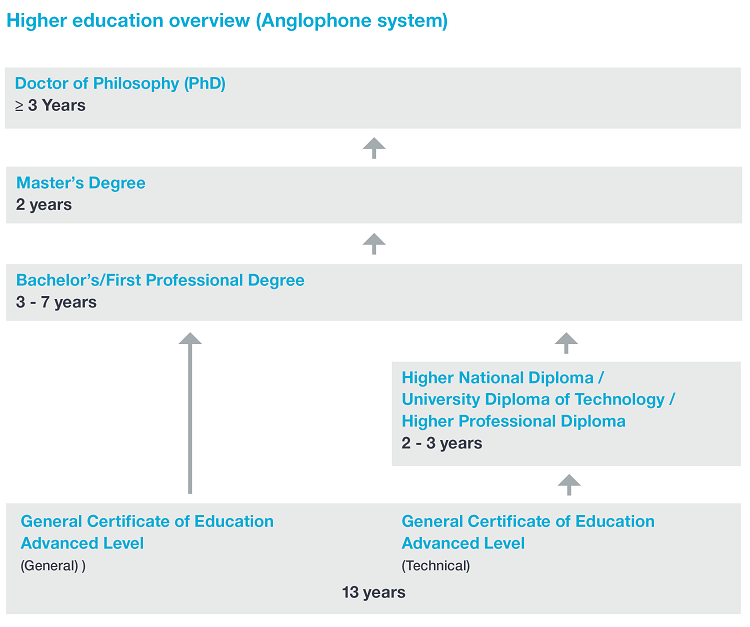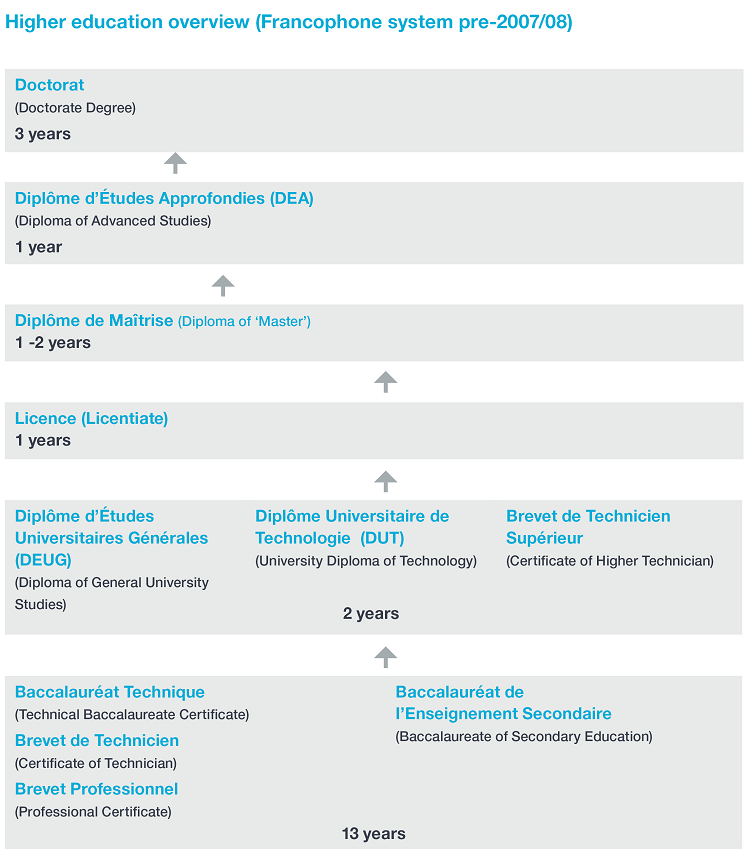Country overview
Official country name: Republic of Cameroon
Location: Central Africa
Capital: Yaoundé
Area: 475,440 square km
Population: 19.4 million (2005 Census)
Ethnicity: Cameroon has over 240 ethnic groups. Bamileke is the largest ethnic group in the west, Fulani/Kirdi in the north, and Beti in the south.
Religion: Christianity is the predominant religion in Cameroon, divided among roughly 38% Catholics, 26% Protestants and 4% other Christian denominations. 21% of the population practice Islam and 6% some aspects of animist beliefs. Christians are mainly found in the southern and western parts of the country. The Fulani in the northern francophone regions and the Bamoun in the west region are mostly Muslims.
Languages: English and French are the 2 official languages of the country. The English-French bilingual policy is stated in the constitution. French is the language of instruction in the 8 French regions while English is the dominant language in the anglophone south-west and north-west regions. Official bilingualism is adopted for legislative, administrative and judicial functions. Over 200 indigenous languages are spoken in Cameroon; some of them including Bamileke, Bamoun, Basaa, Bafia, Duala, Ewondo and Fulfulde are used for media broadcasts.
Founding date: The Portuguese were the first Europeans to establish contact with Cameroon. Cameroon was coined from the Portuguese name Rio dos Camarões (River of Prawns) when Portuguese explorers arrived in the country in the 15th century. From 1884 until 1914, the country was colonized by Germany and named Kamerun. During the First World War in 1916, the country was divided between Britain and France. Francophone Cameroon declared independence from France in 1960 while Anglophone Cameroon became independent from the British in 1961. Both areas were thereafter unified to form the Federal Republic of Cameroon. The Federal Republic of Cameroon was transformed into the United Republic of Cameroon in 1972. In 1984, the United Republic of Cameroon became known as the Republic of Cameroon.
Administration: The country is a decentralized unitary republic. Cameroon is divided into 10 administrative regions. Eight regions are francophone and 2 are anglophone.
School education



Cameroon operates 2 education systems: the anglophone system (based on the British model) and francophone system (based on the French model). English is the main language of instruction in the anglophone system while French is the dominant language in the francophone system. Until 2006 primary school was 6 years in the francophone system and 7 years in the anglophone. Since 2006, primary school is compulsory in both systems and lasts 6 years (age 6 to 12). Upon completion, students are awarded a First School Leaving Certificate in the anglophone system. In the francophone system they receive a Primary School Leaving Certificate (Certificat D’études Primaires - CEP). The academic year runs from September to June and each school year consists of 36 weeks of instructions.
General secondary education in both systems lasts 7 years, structured in a 5+2 pattern in the anglophone system and a 4+3 pattern in the francophone system. Students can choose either an academic stream or a technical and vocational stream.
In the anglophone system the academic lower secondary stream lasts 5 years and leads to the Cameroon General Certificate of Education - Ordinary Level (GCE O - level). The academic upper secondary cycle is 2 years and leads to the General Certificate of Education - Advanced Level (GCE A - level). A minimum of 2 A- level and 4 O - level passes are required for admission to higher education in Cameroon.
At the upper secondary level, students have the option to choose between an arts (A) or sciences (S) stream with subject combinations as follows:
Arts:
- A1 – English literature, French and history
- A2 – History, geography and economics
- A3 – English literature, economics and history
- A4 – Geography, economics and mathematics
- A5 – English literature, philosophy and history
Sciences:
- S1 – Mathematics, chemistry and physics
- S2 – Physics, chemistry and biology
- S3 – Mathematics, chemistry and biology
- S4 – Chemistry, biology and geology
- S5 – Chemistry, biology and geography
In the francophone system, general lower secondary school lasts 4 years and leads to the award of Certificate of First Cycle of the Second Degree Studies (Brevet d'Études du Premier Cycle du Second Degré - BEPC). The academic upper secondary cycle is 3 years. After the first 2 years a student may exit with a Probationary Certificate (Probatoire). Upon the completion of the third year, the Baccalaureate of Secondary Education – General (Baccalauréat de ľEnseignement Secondaire - Général) is awarded.
At the academic upper secondary level (Lycée) all students study English and specialize in one of 6 streams (séries) as follows:
- A – Letters and philosophy (Lettres-philosophie)
- B – Economics and social science (Sciences économiques et sociales)
- C – Mathematics and physical science (Mathématiques et sciences physiques)
- D – Mathematics and life and earth science (Mathématiques et sciences de la vie et de la terre)
- E – Mathematics and technology (Mathématiques et technologie)
- TI – Information technology (Technologies de l'information)
Students from stream A have the option to choose from one of the following sub-streams:
- A1 – Latin and Greek
- A2 – Latin and second modern language
- A3 – Latin (and mathematics)
- A4 – Second modern language (and mathematics)
- A5 – Second and third modern language
Technical and vocational secondary education in both systems is 7 years in length and follows the francophone 4+3 pattern. The technical lower secondary level in the anglophone system leads to the GCE O-level (technical) certificate and the technical upper secondary education leads to the GCE A-level (technical) certificate.
In the francophone system, 4-year vocational education at the lower secondary level takes place at technical colleges (lycées techniques) and leads to the award of the Certificate of Professional Aptitude (Certificat d'Aptitude Professionnelle - CAP). Similarly, upper secondary technical education takes place at technical colleges (lycées techniques) and it is 3 years in length. Completion of the first 2 years leads to one of the following 3 awards: Probationary Technical Certificate (Probatoire Technique); Probationary Technician Certificate (Probatoire du Brevet de Technicien); or Certificate of Professional Studies (Brevet d'Études Professionnelles). Upon the completion of the third year, either the Baccalaureate of Secondary Education – Technical and Professional (Baccalauréat de ľEnseignement Secondaire - Technique et Professionel); Certificate of Technician (Brevet de Technicien); or Professional Certificate (Brevet Professionnel) is awarded.
Higher education overview



Higher education in Cameroon is organized in 3 levels or cycles: the first, second, and third. Admission to higher education requires GCE A-level passes in 2 subjects or a Baccalaureate certificate. Cameroon implemented a major reform of higher education qualifications in 2007. Commonly referred to as the LMD reform (that is Licence-Master-Doctorat in French) which harmonized the 3 cycles of university education in the francophone system with that of the anglophone system.
Until 2007, the first cycle of university study in the francophone system lasted 2 years and led to the award of: Diploma of General University Studies (Diplôme d'Etudes Universitaires Générales - DEUG), Diploma of General Literary Studies (Diplôme ďEtudes Littéraires Générales - DELG), or Diploma of General Scientific Studies (Diplôme ďEtudes Scientifiques Générales - DESG). The second cycle lasted 1 to 2 years following the first cycle and led to either a Licentiate Diploma (Diplôme de Licence) or a Diploma of ‘Master’ (Diplôme de Maîtrise). The Licentiate Diploma was awarded after one year of study following the DEUG while the Diploma of ‘Master’ was awarded following 1 to 2 years after the Licentiate Diploma. In the third cycle, the Diploma of Advanced Studies (Diplôme d'Etudes Approfondies - DEA) was awarded 1 year after the Diploma of ‘Master’. The Doctorate (Doctorat) was awarded 3 to 5 years following a DEA. In 2007 university education in the francophone system was restructured into a 3-year first cycle (Licence), 2-year second cycle (Master), and 3-year third cycle doctoral program (Doctorat). These cycles are also expressed in terms of the years of study required after the Baccalaureate (Baccalauréat) and referred to as Bac+3, Bac+5, and Bac+8 credentials respectively.
The Licence-Master-Doctorat (LMD) structure corresponds to the Bachelor-Master-Doctorate (BMD) in the anglophone system. Licence/Bachelor programs involve 3 years of full-time study. In both systems, programs in specialized and professional fields such as engineering, medicine, and pharmacy require 5 or more years of undergraduate study. Master’s degree programs require 2 years of full-time study. Doctorate programs involve at least 3 years of research with a thesis.
Technical education
Post-secondary technical and vocational education programs are offered in both the anglophone and francophone systems. The programs range from 1 to 3 years in duration leading to the following awards: University Diploma of Technology (Diplôme Universitaire de Technologie - DUT), Certificate of Higher Technician (Brevet de Technicien Supérieur- BTS), Higher National Diploma (HND), and Higher Professional Diploma (HPD).
Institutions
Post-secondary education is offered at public and private universities, specialized institutions, and teacher training colleges.
Credential comparison
| Credential | Entrance requirements | Length of study | IQAS comparison |
|---|---|---|---|
| General Certificate of Education (Advanced Level) | Completion of Primary and Lower Secondary School (11 years) | 2 years | Generally compares to the completion of a High School Diploma. |
| Higher National Diploma | General Certificate of Education (Advanced Level) | 2 years | Generally compares to the completion of a post-secondary Diploma. |
| Bachelor’s Degree | General Certificate of Education (Advanced Level)) | 3 years | Generally compares to the completion of a 3-year Bachelor’s degree. |
| Master’s degree | Diplôme de Licence (Licentiate Diploma) / Bachelor’s degree | 2 years | Generally compares to the completion of a Master’s degree. |
| Doctor of Philosophy | Master’s Degree | At least 3 years | Generally compares to the completion of a Doctor of Philosophy (PhD) degree. |
Francophone System
| Credential | Entrance requirements | Length of study | IQAS comparison |
|---|---|---|---|
| Baccalauréat de ľEnseignement Secondaire (Baccalaureate of Secondary Education) | Brevet d'Études du Premier Cycle du Second Degré (10 years) | 3 years | Generally compares to the completion of a High School Diploma. |
| Brevet de Technicien Supérieur (BTS) (Certificate of Higher Technician) | Baccalauréat | 2 years | Generally compares to the completion of a post-secondary Diploma. |
| Diplôme d'Études Universitaires Générales (DEUG) (Diploma of General University Studies) | Baccalauréat | 2 years | Generally compares to the completion of a post-secondary Diploma. |
| Diplôme de Licence (Licentiate Diploma) | Baccalauréat or DEUG, BTS | 3 years after Baccalauréat or 1 year after DEUG, BTS | Generally compares to the completion of a Bachelor’s degree. |
| Diplôme de Maîtrise (Diploma of 'Master') | Diplôme de Licence | 1 year | Generally compares to the completion of a 4-year Bachelor’s degree. |
| Diplôme d'Etudes Approfondies (DEA)(Diploma of Advanced Studies) | Diplôme de Maîtrise | 1 year | Generally compares to the completion of a graduate Diploma. |
| Diplôme de Master (Diploma of Master) | Diplôme de Licence | 2 years | Generally compares to the completion of a Master’s degree. |
| Diplôme de Doctorat (Doctorate Degree) | Diplôme d'Etudes Approfondies Or Diplôme de Master | At least 3 years | Generally compares to the completion of a Doctor of Philosophy (PhD) degree. |
Cameroon - credential templates